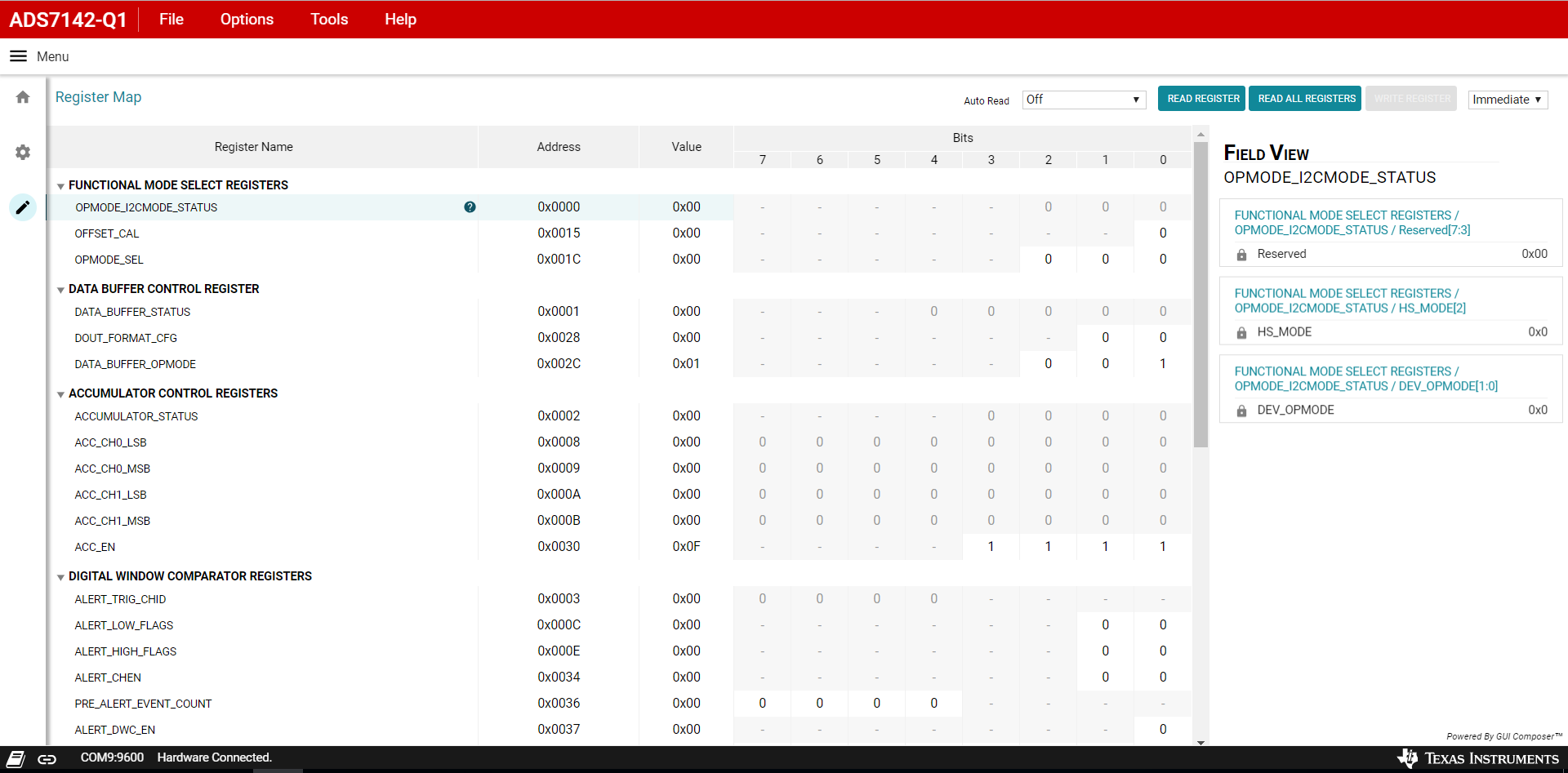SBAU321B November 2018 – June 2021 ADS7142 , ADS7142-Q1
3.3.2 REGMAP
Figure 3-4 shows register map page for the ADS7142-Q1. On the top right corner, options to read registers individually, read all the registers at once, or write individual register are available. Users can choose to have the register values modified in the GUI to be written on the device instantaneously by selecting the Immediate option or later using the Deferred option.
 Figure 3-4 ADS7142-Q1 Register Map Page
Figure 3-4 ADS7142-Q1 Register Map Page